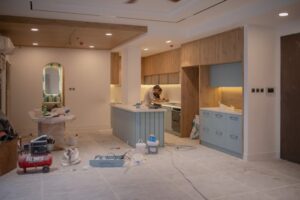
In the intricate web of homeownership, there’s a thread that often gets overlooked: home building insurance. Many homeowners, particularly new ones, navigate through the property landscape armed with an arsenal of assumptions, often leading to misconceptions that could cost time, money, and peace of mind.
In the points below, we unravel some of these misunderstandings to pave a clear path to making informed decisions about your home building insurance.
Myth 1: Home Building Insurance is Optional
The first and perhaps the most dangerous misconception is considering insurance as a secondary need. While it’s true that there’s no law mandating home insurance, it’s often a requirement if you have a mortgage. More importantly, insurance is your financial defence against unforeseen disasters that could leave you footing colossal bills. The reality is that without home building insurance, you’re taking a gamble on what is likely your most valuable asset.
Myth 2: It Covers All Damages, Natural or Otherwise
Many individuals believe that once they secure insurance, they’re covered against all forms of damage. However, policies differ significantly – standard policies often cover specific types of damage (like fire or certain natural disasters), while incidents such as floods or earthquakes might require additional coverage. It’s crucial to discuss with your provider the nitty-gritty of what’s included and what requires a separate policy.
Myth 3: Home Insurance is Only for the Building
Another widespread belief is that home building insurance solely covers the structure. On the contrary, a comprehensive policy can guard more than the bricks and mortar; it may protect structures like garages, sheds and fences, and potentially your belongings and liabilities, depending on your coverage. This highlights the importance of understanding the scope of your policy fully.
Myth 4: Premiums are Non-Negotiable
Many homeowners accept insurance premiums at face value. The truth is, they’re often negotiable. Various factors, including your home’s age, safety features, and even your credit score, can influence the cost. Additionally, shopping around, bundling insurance types, or discussing discounts with insurance representatives could secure you a more favorable deal.
Myth 5: Market Value Equals Insurance Value
A common mistake is equating your home’s market value with the amount for which it should be insured. Insurance should cover the cost of rebuilding your home, not buying it. Rebuilding costs can fluctuate based on construction rates, material costs, and local regulations. Insuring for the correct amount requires calculating these specific variables, not just considering your home’s purchase price or current market value.
Navigating the Complex Terrain of Home Building Insurance Doesn’t Have to be a Daunting Expedition
By debunking these myths, you’re better positioned to understand the nuances of your policy, ask informed questions, and safeguard your cherished haven comprehensively. After all, your home is more than a building; it’s the centrepiece of your life’s moments, deserving of robust protection. So, take that extra step: review your policy, discuss it with professionals, and ensure your peace of mind is built on the solid foundation of reality, not misconceptions.




